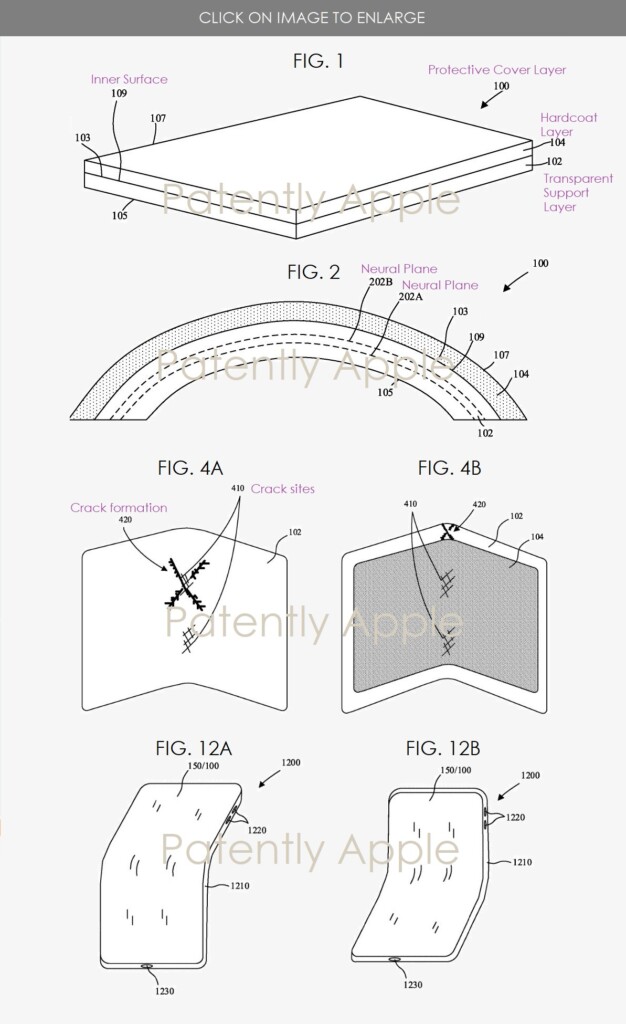
This Is How Apple Is Planning to Protect Its Folding Screens From Cracking
- An Apple patent describes the use of silicon and aluminum ceramics in a hard-coat protective layer.
- This would theoretically make a folding screen resistant to cracks, scratches, and even puncture.
- Apple will only release a folding iPhone if they manage to make it durable enough to last for years.
Apple is known for not accepting compromises in quality and product realization, so when its engineers are considering possible solutions to practical problems that other manufacturers simply go with, things get interesting. One such thing is the nature of folding screens that we could see on a future iPhone and the fact that these need to be made durable and crack resistant.
In March 2019, we saw a patent incorporating heating elements across the folding material's flexing zone, which would help it maintain its mechanical strength for longer and even under harsh cold-weather conditions. Now, yet another patent on the topic has appeared on the US Patent & Trademark Office, focusing on tackling the problem of crack formation of the riskiest sites of a folding screen.
Based on the illustrations shown in the patent documents, Apple’s engineers are considering using a protective cover layer, a hard-coat layer, and a transparent support layer, all serving as strengthening elements that should help prevent micro-ruptures from propagating.
The hard-coat layer is described as something that is sufficiently durable to withstand puncture and scratches, of course, while also being flexible and malleable enough to be incorporated in a folding screen.
As for the materials involved, the hard-coat layer includes a particle filler within a polymer matrix, and this filler is said to contain ceramic particles such as MgAlO, SiAlON, AlON, and ZrO. These are sialon beta ceramics containing aluminum, oxygen, nitrogen, magnesium, etc. They are considered ideal because they can take any shape during manufacturing, are corrosion and oxidation resistant, have a low thermal expansion, and are hard enough to resist punctures.
The illustrations depict something that looks like a future iPhone folding inwards or outwards, so the possible implementation and design of such a device is pretty fluid at this point. Based on what other OEMs have done, inward folding screens are the safer choice, but again, Apple may go with its own approach if (and when) the company decides that they’re doing this.
Apple wants its devices to last for many years, and this is why the firm chooses to continue supporting five-year-old models, delivering the latest iOS version, and even trying to prevent their old batteries from dying. Simply put, the firm is more interested in selling services to its ever-growing userbase than in having them buy new devices every year. As such, if we ever see a foldable iPhone after all, we expect it to be a marvel of handheld electronics engineering, capable of lasting for at least five years of daily use.






